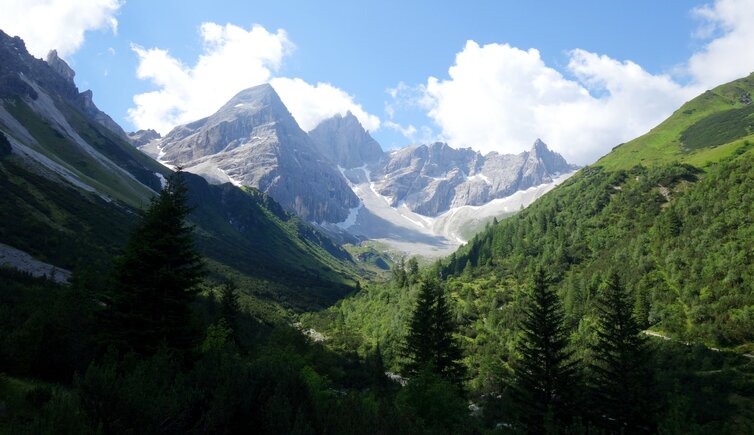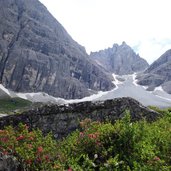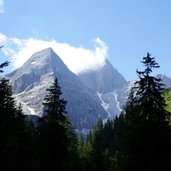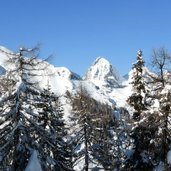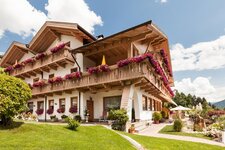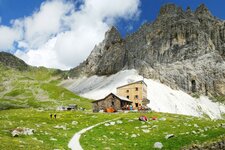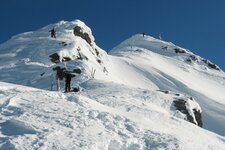This mountain exists in triple version: the Fleres Tribulaun, the Gschnitz Tribulaun and the Obernberg Tribulaun
Image gallery: Tribulaun
The Tribulaun Group with the three eponymous peaks Fleres Tribulaun (3,097 m a.s.l.), Gschnitz Tribulaun (2,946 m a.s.l.) and Obernberg Tribulaun (2,780 m a.s.l.) is constituted of Main Dolomite from the Triassic, derived from the sedimentation of lagoonal muds. The Dolomite was found here - the French geologist and mineralogist Déodat Gratet de Dolomieu (1750 - 1801) discovered this type of rock, which until that time was unknown. The Fleres Tribulaun is the highest peak of the Tribulaun Group and one of the main climbing mountains of the Stubai Alps. It borders with the Gschnitztal valley in North Tyrol and with the valley of Fleres, the "Silver Valley", in South Tyrol.
The Fleres Tribulaun or Pflerscher Tribulaun is marked by deep fissures and steep rock faces. The route takes you from Fleres to the Sandjoch saddle and through a gorge in a south-easterly direction to the peak. The III° degree tour and is not difficult in terms of climbing technique, but must not be undervalued due to rock slide. Climbing equipment is absolutely essential, an alpine guide is recommendable! If you do not want to scale the peak, you may try the beautiful mountain tour to the Calciati al Tribulaun Hut. If you prefer to see this mighty mountain from the distance, you can do so during the winter hike on the Flaner Jöchl or the ski tour to Mount Cima del Tempo.
